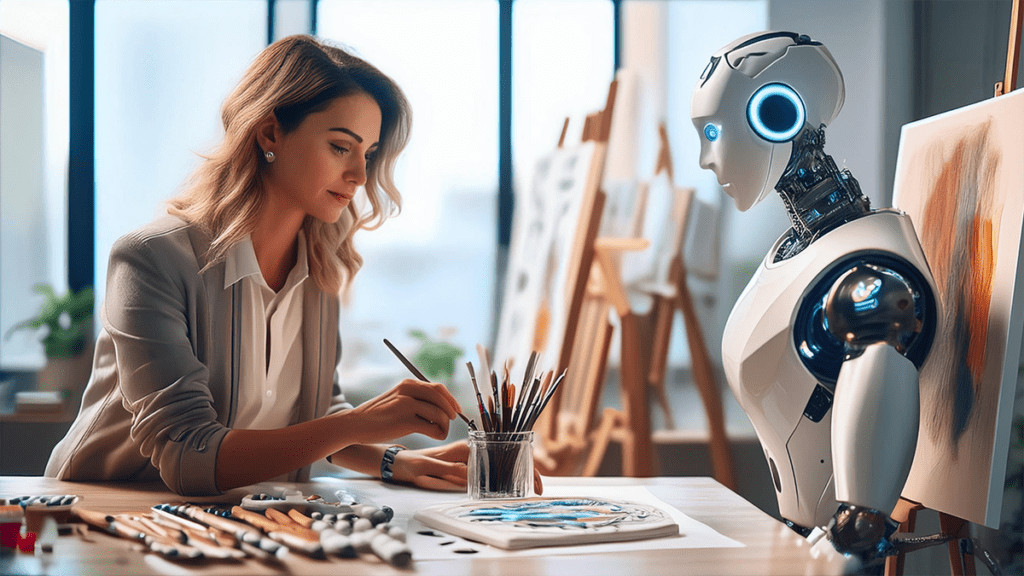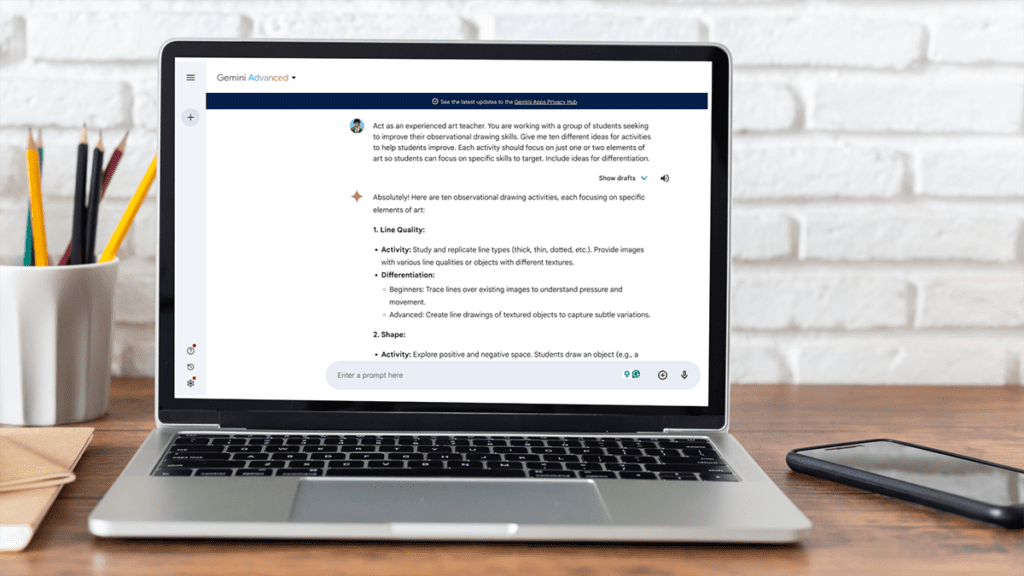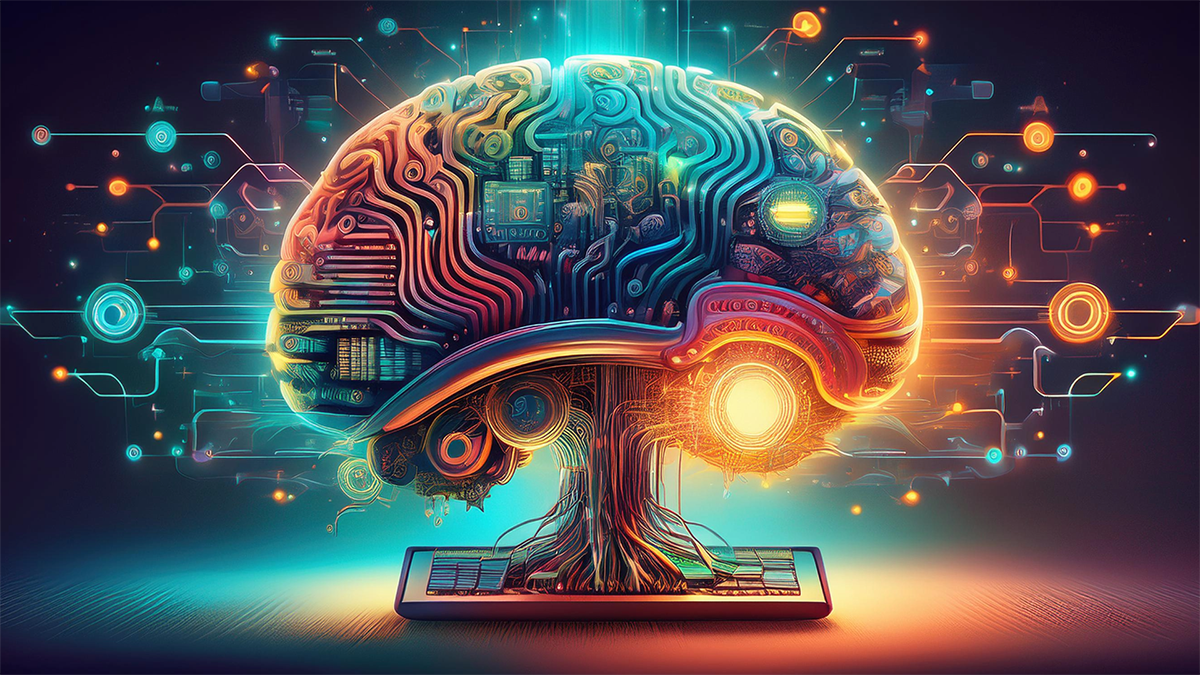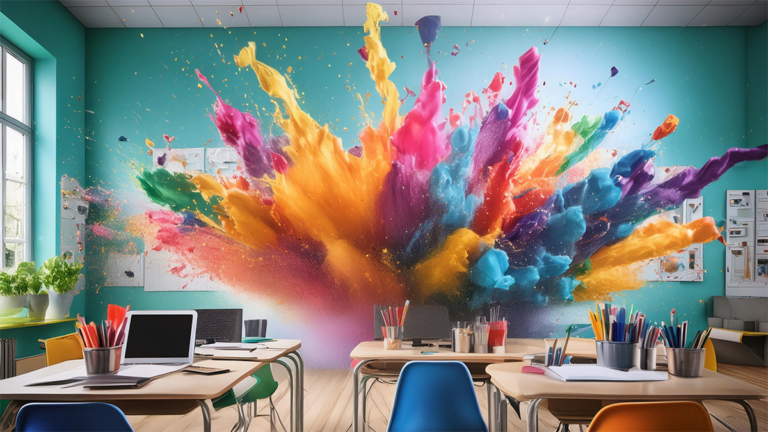Note: Follow district and school policies regarding AI. Be sure to check on your school and district policies often because they can change quickly.
Artificial intelligence (AI) has emerged as a powerful tool for creativity and education, revolutionizing the way we approach both artistic expression and learning. You can use AI tools to make your job easier and enhance learning for students, but good results require good prompts. Prompt engineering is the art of crafting precise instructions to guide AI’s output. Much like a skilled teacher guiding a student, effective prompt engineering involves providing clear context, setting specific constraints, and iteratively refining instructions to achieve the desired outcome.
Engineer prompts and wield AI tools like a pro with the ideas below.

What is prompt engineering?
In the realm of visual art, AI is the ability of computer systems to mimic human creative processes. This can involve generating text, images, sounds, and more. A crucial aspect of working with AI art tools is prompt engineering, which involves crafting precise written prompts to guide AI’s output. Much like instructing a student, a well-crafted prompt can inspire AI to generate specific styles, subjects, or emotions, while vague prompts may lead to unpredictable results. A strong prompt will provide clear context, constraints, and objectives.
Consider these two different prompt examples:
- Vague: Give me ideas to improve observational drawing skills.
- Specific: Act as an experienced art teacher. You are working with a group of third and fourth-grade students seeking to improve their observational drawing skills. Give ten different activity ideas to help students improve. Each activity should focus on just one or two elements of art so students can prioritize specific skills to target. Include ideas for differentiation.

Provide context for more relevant results.
Context is key when it comes to crafting effective AI prompts for art. The more information you provide, the more likely AI will generate content that is appropriate, challenging, engaging, and relevant to your curriculum and students. Plus, it can help AI make connections and suggest activities you may not have considered!
For example, if you’re asking AI to generate questions for your students, it will need to know a lot of information. You can enter the following excerpt: You’re an experienced art teacher. You are doing an in-class review game with key ceramic terms around the stages and kinds of clay. Write the questions at a 9-10th grade level and include a mix of multiple-choice and fill-in-the-blank.
Set constraints.
Setting constraints for AI tools is a crucial step in ensuring the generated content aligns with educational goals and safety standards. For art teachers, this could involve specifying the source material for AI to reference. Try limiting image searches to reputable museum websites or educational platforms. This ensures that AI is pulling from reliable and curated sources and will decrease the likelihood of inappropriate or inaccurate content.
When looking up artists and artwork, you can set constraints to specify the style, medium, culture, and time period. Consider the age and skill levels of your students and then set grade-level or scope and sequence constraints. By carefully defining these boundaries, you can harness the power of AI while maintaining control over the learning experience and ensuring a safe and productive environment for students.
Teach to AI as if it were a student.
When you present a lesson to your students, you provide them with clearly defined criteria for success. That is also a great practice for working with AI! Take the same approach and explicitly state what you want the AI tool to create so it can compile its best results. Remember that AI is a tool and only as good as the user’s skill, intelligence, and approach.
If you told a student to simply “paint a landscape,” you would probably get a flat painting with minimal detail. If you wanted your students to create a successful landscape, you would provide criteria such as including a background, middleground, and foreground, atmospheric or linear perspective, specific color schemes, and smooth gradations. Along similar lines, telling AI to “generate an image” will likely result in some strange pictures as it “guesses” to fill in the blanks.

Approach AI with a growth mindset.
Remember, AI tools are young learners and still have a lot of room to grow. If the first output isn’t exactly what you envisioned, don’t give up. Most AI tools offer options to refine and iterate, much like providing constructive feedback to students. You can request longer or shorter responses, tweak the tone, or simply generate more results based on your original prompt.
Even a simple edit to your prompt can make a significant difference! Think of each iteration as a learning opportunity for both you and AI. With each interaction, AI learns from your feedback and will gradually improve its ability to understand your needs. So, embrace the power of “yet” and keep experimenting!
For instance, after using AI to generate art activity ideas, ask it to create memorable phrases of key ideas. AI will remember the context and information from the previous prompt, so your added prompt can be shorter. Try: Give me a short phrase to tell students with each activity to help them focus and remember key concepts. The phrase should be clear and use kid-friendly language.

If you’re curious about integrating AI and want to learn more, check out AI in Art Education. This graduate course provides practical strategies to develop communication, creativity, and critical thinking in a tech-evolving landscape.
AI is a powerful tool you can mobilize with prompt engineering. AI can assist in everything from compiling engaging lesson ideas to providing personalized feedback. AI tools cannot replace your expertise, but they can serve as a great personal assistant. AI can also help you to refine your ideas or consider new perspectives. Just like you would teach and approach a student, make sure AI understands your situation and goals by providing context, constraints, and criteria for optimal success. Give it a try and see what you and AI can accomplish together in your next art lesson!
What AI prompts give you great results?
What problems do you wish AI tools could solve for you?
To chat about AI prompt engineering with other art teachers, join us in The Art of Ed Community!
Magazine articles and podcasts are opinions of professional education contributors and do not necessarily represent the position of the Art of Education University (AOEU) or its academic offerings. Contributors use terms in the way they are most often talked about in the scope of their educational experiences.





